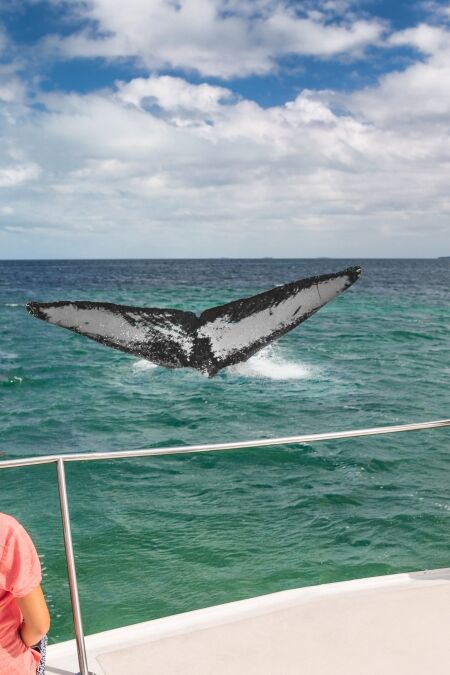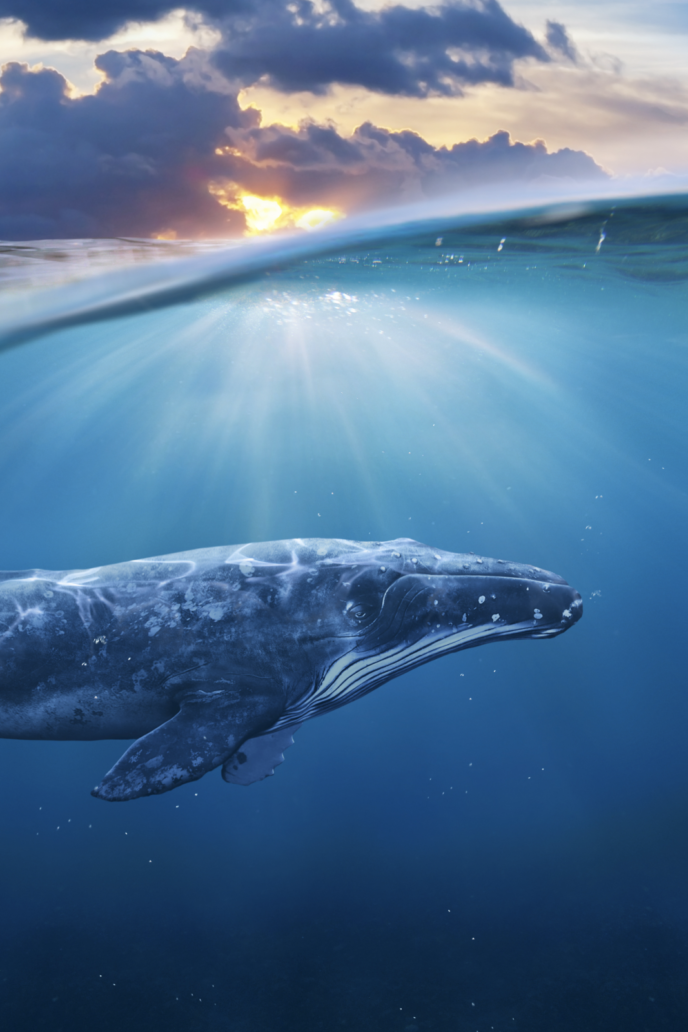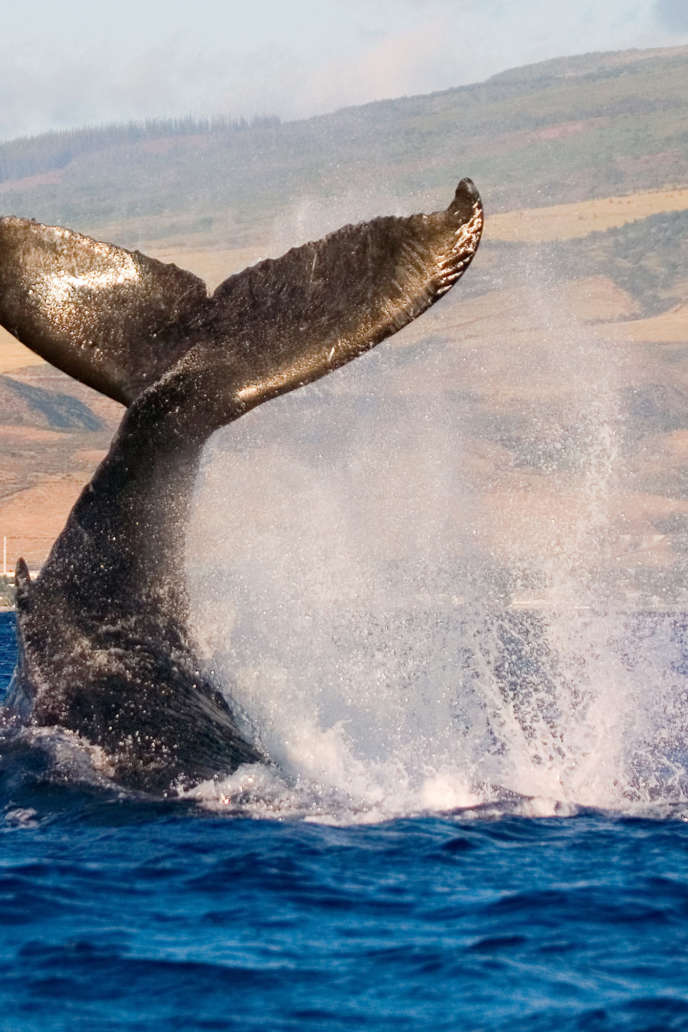Whale watching in Hawaii provides a unique and breathtaking experience unlike any other. Between December and April, the warm, pristine waters of the Hawaiian Islands become a playground for thousands of humpback whales migrating from Alaska. These majestic creatures, known for their acrobatic displays and haunting songs, are a sight to behold. However, as we share their habitat during this period, it’s paramount to follow specific etiquette to ensure their safety and well-being. This guide presents a set of do’s and don’ts for a responsible and rewarding whale-watching journey.
5 Do’s of Whale Watching in Hawaii
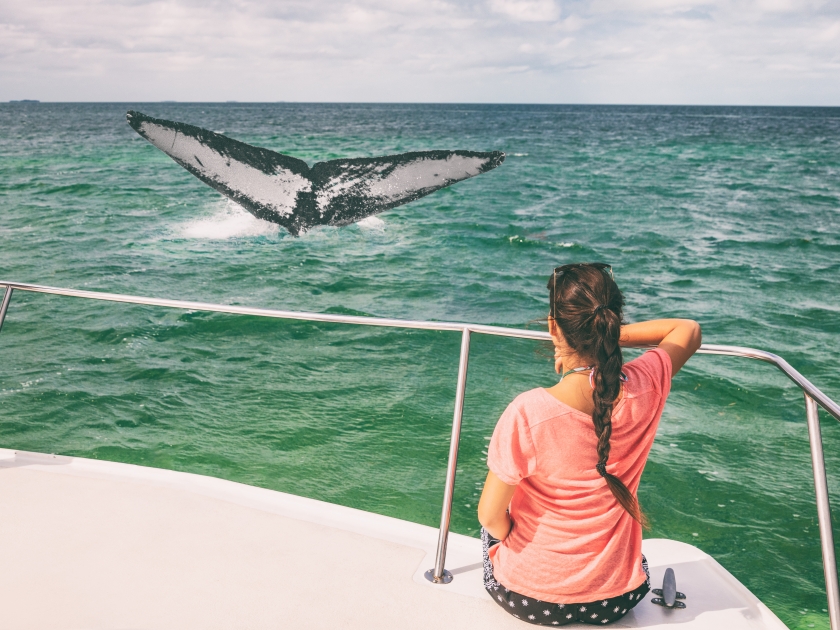
1. Follow guidelines and regulations
Hawaii’s official whale-watching guidelines are a crucial part of the conservation effort. These guidelines, set by the National Oceanic and Atmospheric Administration (NOAA) and local authorities, aim to ensure the safety of marine life and observers. They include recommended viewing distances, permissible behaviors, and specific instructions to minimize disturbance to the whales. Adherence to these guidelines is essential for preserving the well-being of humpback whales and maintaining the delicate balance of their marine ecosystem. This responsible tourism contributes to the overall health and sustainability of Hawaii’s marine ecosystem.
2. Respect the marine life
Always remember, we are visitors in the ocean realm. Treat all marine life with respect, including whales, dolphins, and other sea animals. Avoid touching, feeding, or attempting to ride them. Such actions can disturb their natural behavior and potentially harm them. Simply observe these magnificent creatures from a safe distance and enjoy the show they naturally provide.
3. Keep a safe distance
It’s crucial to maintain a safe distance from these majestic creatures. Federal regulations require that boats and other watercraft stay at least 100 yards away from humpback whales. This distance ensures the safety of both the whales and the observers. It’s important to remember that these are wild animals, and their behavior can be unpredictable. By keeping a respectful distance, we can enjoy their beauty without causing them stress or harm.
4. Dispose trash properly
It is crucial to ensure that no garbage or waste materials are thrown into the ocean during your whale-watching trip. Litter can harm the marine ecosystem and pose a threat to the whales and other marine life. Always carry a trash bag with you and dispose of your waste responsibly once back on land. Understand that the ocean is the home of these magnificent creatures; help to keep it clean and safe.
5. Research reputable tour companies
Always research and book your whale-watching tour with a reputable company. Reputable companies are knowledgeable about local regulations and committed to preserving marine life. HawaiiActivities.com offers eco-friendly tours and is committed to research, education, and conservation. This company follows a strict code of conduct to minimize disturbance to the whales. By choosing a reputable company, you can enjoy the spectacular sight of whales in their natural habitat while also contributing to their preservation.
5 Don’ts of Whale Watching in Hawaii
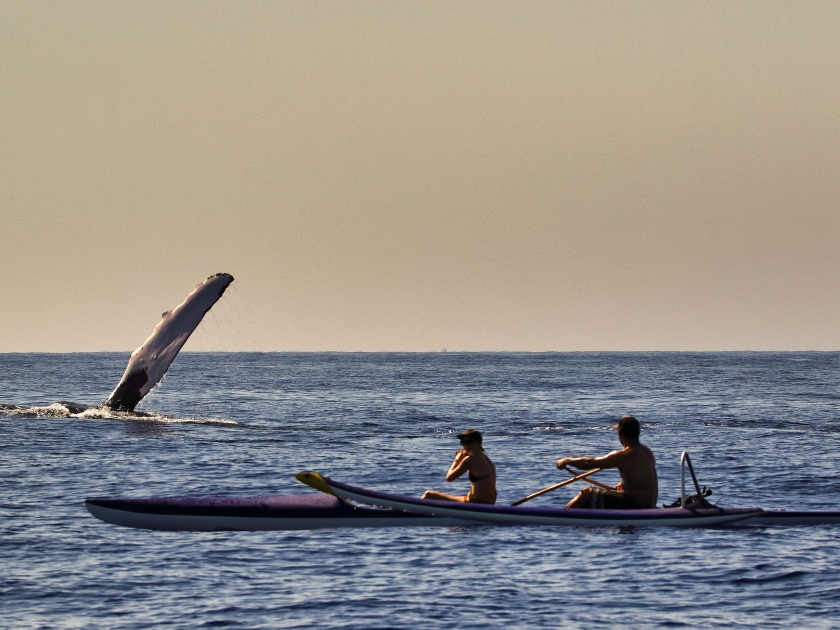
1. Don’t feed the whales
Interfering with a whale’s natural diet can have detrimental effects on their health and behavior. The dependency on human-provided food can alter the natural foraging behaviors of marine life, impacting their ability to find food in the wild. Visitors need to refrain from feeding marine animals during whale-watching excursions to uphold the integrity of the ecosystem and promote the animals’ independence in their natural habitat. Whales exhibit specific behaviors essential for their survival, reproduction, and overall well-being. Respecting the natural behaviors of whales is paramount in ensuring a positive and sustainable whale-watching experience.
Learn More: A Beginner’s Guide to Understanding Whale Behavior
2. Avoid loud noises
Sound travels faster in water than in air and can cause considerable disturbance to marine life. Whales, in particular, rely on sound for communication, navigation, and hunting. Therefore, it’s crucial to minimize noise production during your whale-watching trip. Avoid playing loud music or shouting, and ensure your boat’s engine is as quiet as possible. Excessive noise from boats, sonar, or other human activities can disrupt their natural communication patterns, leading to disorientation, stress, and potential alterations in migration and feeding behaviors. Whale watchers must minimize noise pollution to preserve the acoustic environment, allowing these majestic creatures to navigate and communicate effectively in their marine habitats.
3. Do not approach too closely
The disturbance caused by approaching whales too closely poses a significant risk of harm to these majestic creatures. Physical proximity can lead to collisions with vessels, causing injuries to the whales or damage to their sensitive skin. Furthermore, close encounters may lead to behavioral changes, as startled or stressed whales may alter their course abruptly, potentially putting them at risk of entanglement in fishing gear or other marine hazards. Whale watchers must prioritize the safety and well-being of the whales by adhering to recommended viewing distances, ensuring a mutually respectful coexistence between humans and these awe-inspiring marine mammals.
4. Don’t chase the whales
Chasing or pursuing whales can be highly disruptive and stressful for these majestic creatures. It’s important to remember that our goal is to observe and appreciate their beauty without causing them distress or harm. Always allow the whales to control the encounter, moving at their own pace and direction. If a whale chooses to move away, respect this decision and do not attempt to follow or pursue it. In situations where a boat inadvertently finds itself too close to a whale, slow down and move away at the earliest safe opportunity. This practice not only ensures the whales’ well-being but also enhances the quality of your whale-watching experience.
5. Avoid using flash photography
Responsible wildlife photography involves avoiding the use of flash to prevent disturbance to the marine environment. The bright light can startle these gentle giants and alter their behavior. Moreover, flash photography is often ineffective in capturing good quality images in the marine environment due to the reflection of the water surface. Use natural light to your advantage and consider investing in a camera with strong low-light performance for the best results, all while respecting the whales in their natural environment. It is also recommended to use zoom lenses instead of approaching closely. This allows photographers to capture stunning and detailed shots of humpback whales without intruding on their natural habitat.
Importance of Whale Watching Etiquette
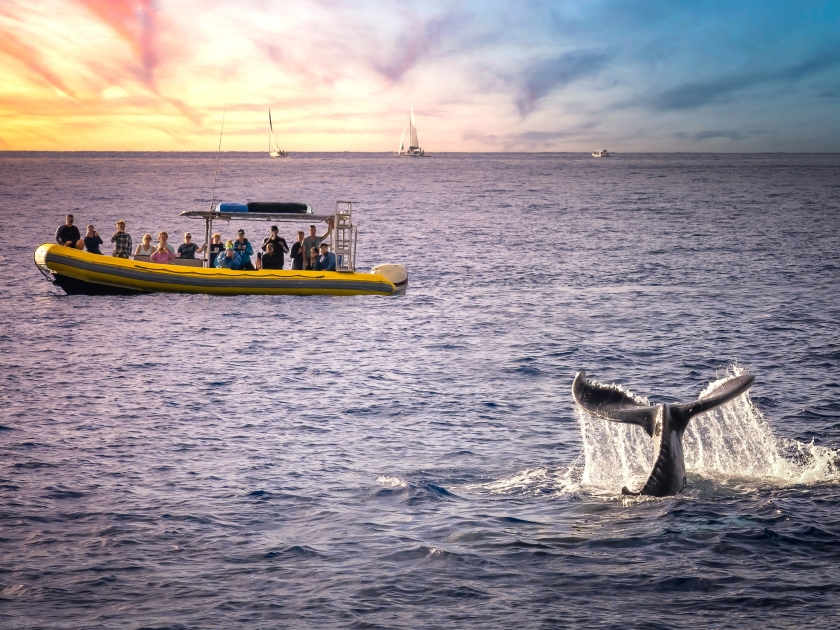
While whale watching can be an exciting experience, it’s important to remember that these magnificent creatures are not in our environment, we are in theirs. Adhering to whale-watching etiquette protects the whales from undue stress or harm, ensuring their natural behavior and movements aren’t disrupted. This not only contributes to the conservation of these majestic marine mammals but also enhances the experience for observers, as whales that feel safe are more likely to exhibit natural and relaxed behaviors.
Your Role as a Visitor in Protecting Hawaii’s Marine Ecosystem is Immensely Significant
As a responsible individual, you can take part in safeguarding these magnificent creatures and preserving their natural habitats. Adhering to the whale-watching etiquette while in Hawaii plays an essential role in this endeavor. By doing so, you not only ensure the well-being of the whales but also contribute to the broader cause of marine conservation. Remember, your security and enjoyment should never compromise the safety and tranquility of marine life. So next time you embark on a whale-watching tour, ensure that your curiosity and excitement do not overshadow your responsibility. Be an enlightened visitor, and help Hawaii keep its marine ecosystem thriving and vibrant, today and for future generations.


